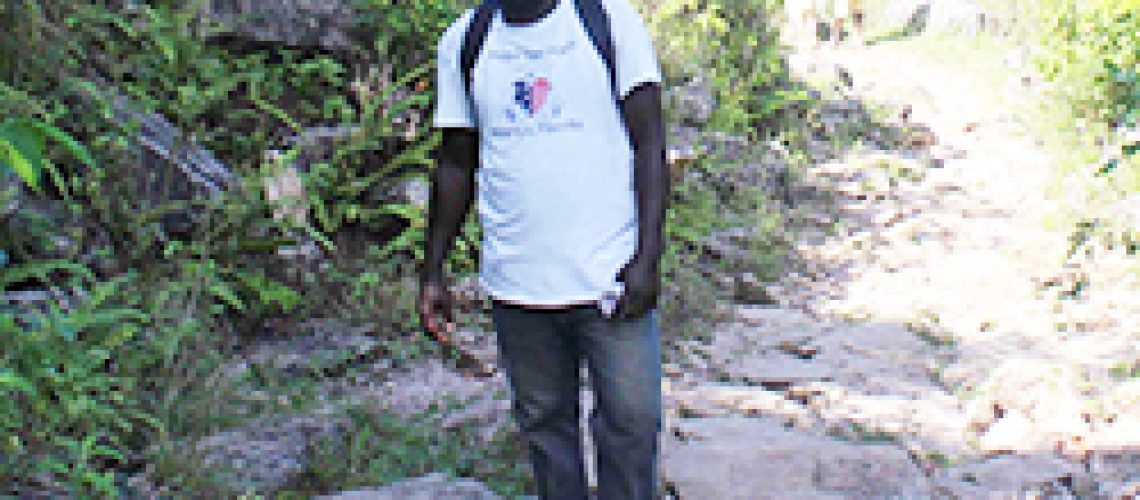Jennifer Lang, Director of Program Communications
Hope for Haiti first launched our Public Health Program three and a half years ago as an initiative to connect our long-term education and healthcare initiatives. Many of rural Haiti’s schoolchildren have no access to traditional healthcare facilities and so are particularly susceptible to diseases like cholera, malaria, and typhoid. In response, Hope for Haiti’s medical team trains young community leaders in prevention and education techniques to share within schools.
 |
 |
 |
| CHW Frenel. |
Donkey with Nurse Claudine & MTVs. | Godly rock. |
An important component to the Public Health Program is monitoring and evaluation through site visits. By observing the community health workers (CHWs) in action, Hope for Haiti’s Public Health Nurses can gauge both the presentation skills of the CHW and also assess students’ retention of information. To visit twelve rural schools is no easy feat! I recently joined our Public Health team on a visit near the Aquin area of Southern Haiti.
After driving as far as we could past the closest town, our team started to hike. The hike took close to three hours and required 8 river crossings. Thankfully, we were able to keep our shoes on this visit – but during the rainy season, kids, teachers, and our own CHWs must wade through the waters just to get to school.
 |
 |
 |
| Hike break with donkey. |
Kids head to school. | Landscape. |
As we walked, I learned a great deal about the daily routine in rural Haiti. Because most of these schools only extend through sixth grade, many older students walked down the mountain as we hiked up to get to the nearest junior high school. The local CHWs explained other hidden disadvantages to life in rural communities. Because market goods must be transported over such a long distance, prices for even staple items like oil or gasoline are highly inflated. Because of the lack of infrastructure, services from doctors or police are non-existent.
Still, the Haitian countryside is picturesque. Families in the area farm small plots, and one of the CHWs pointed out ginger plants and explained its various uses. We passed landmarks, like “the crying mountain” which always has a small waterfall and the huge “Godly rock” overhanging the trail. Both major Haitian phone networks, Digicel and Natcom, are competing to extend reliable cell phone service to the area.
 |
 |
 |
| PH team. | PH team hikes with MTVs. | River crossing. |
Upon arrival to the school, I saw first-hand the difference the Public Health Program is making. New CHW Frenel Saintles taught a lesson on worms and nutrition as he helped Nurse Claudine distribute de-worming tablets and children’s multivitamins. Supervising CHW Telor Pierre Louis discussed sensitive topics like women’s health and sexually transmitted infections with the older class of students, and he was able to communicate information with humor and energy. Most of all, during the hike, both local CHWs stopped in every household to say hello. Their neighbors, children and adults, know the CHWs as resources in case of emergency. By empowering these leaders with knowledge, Hope for Haiti is providing health education where there was previously none.
See the site visit in action with the Public Health video below!

